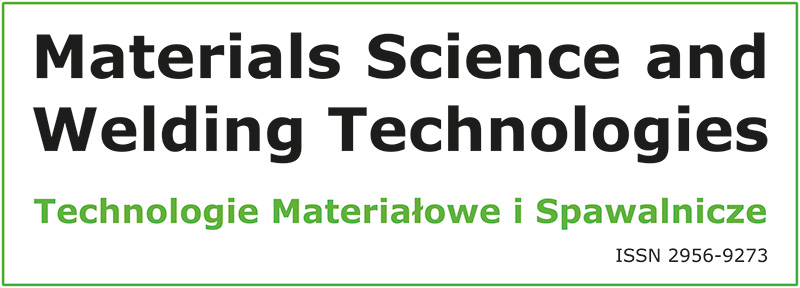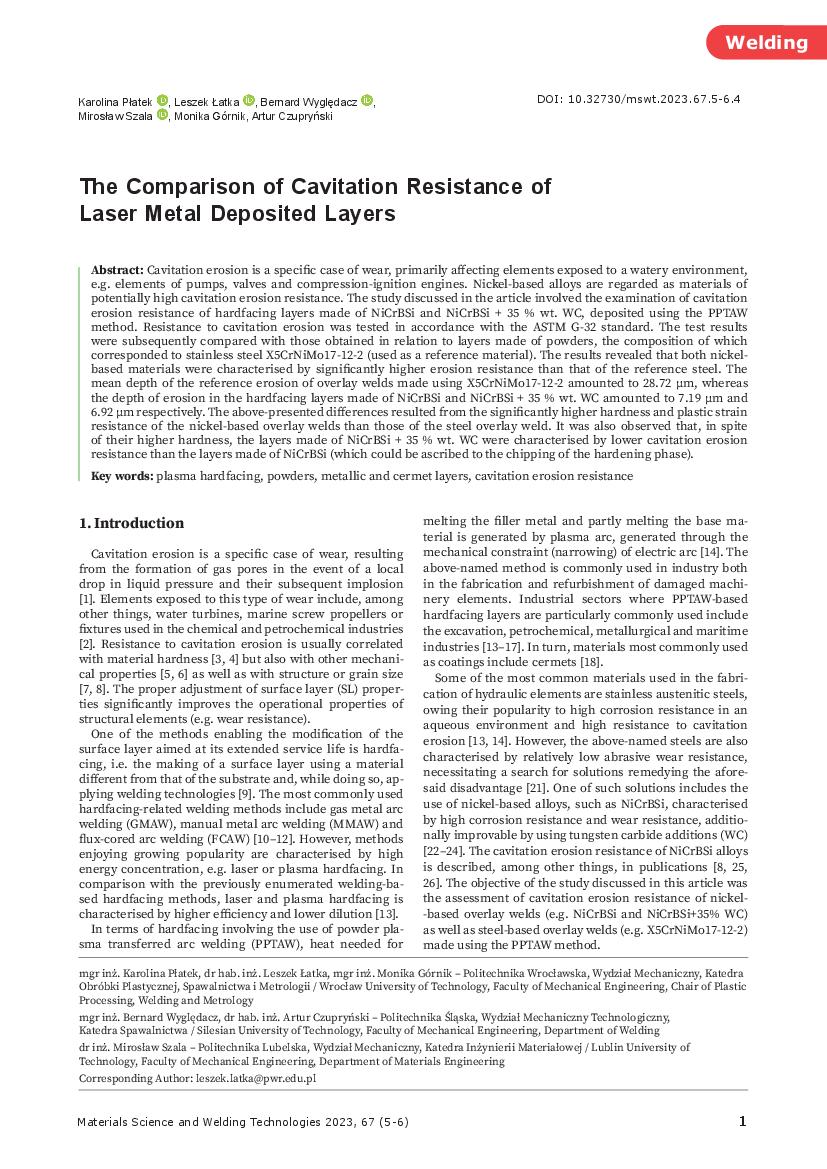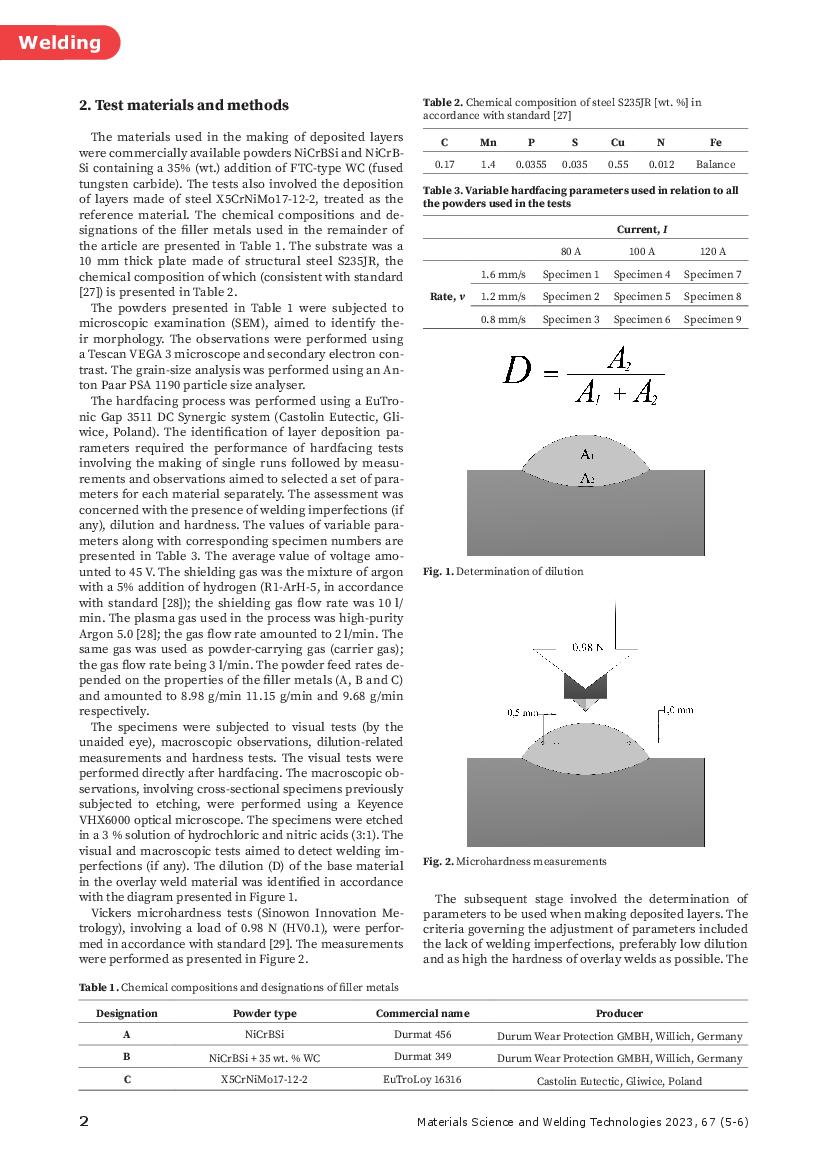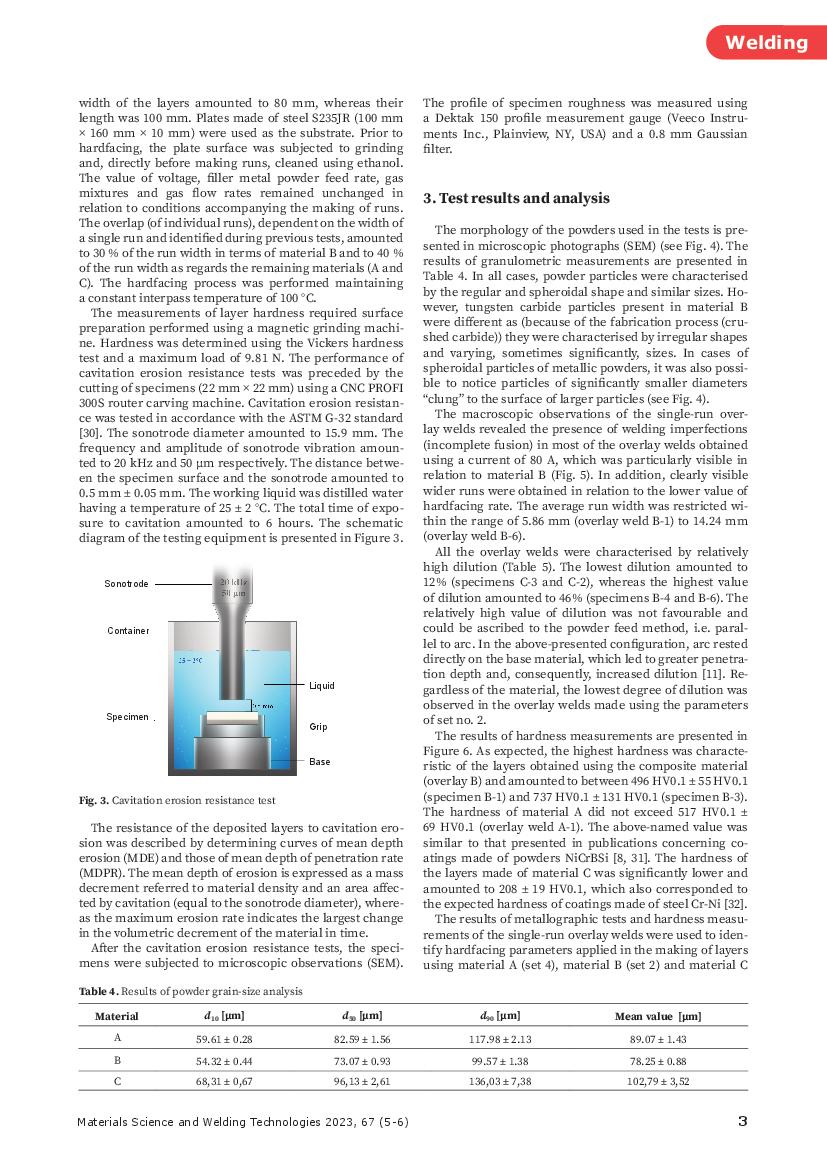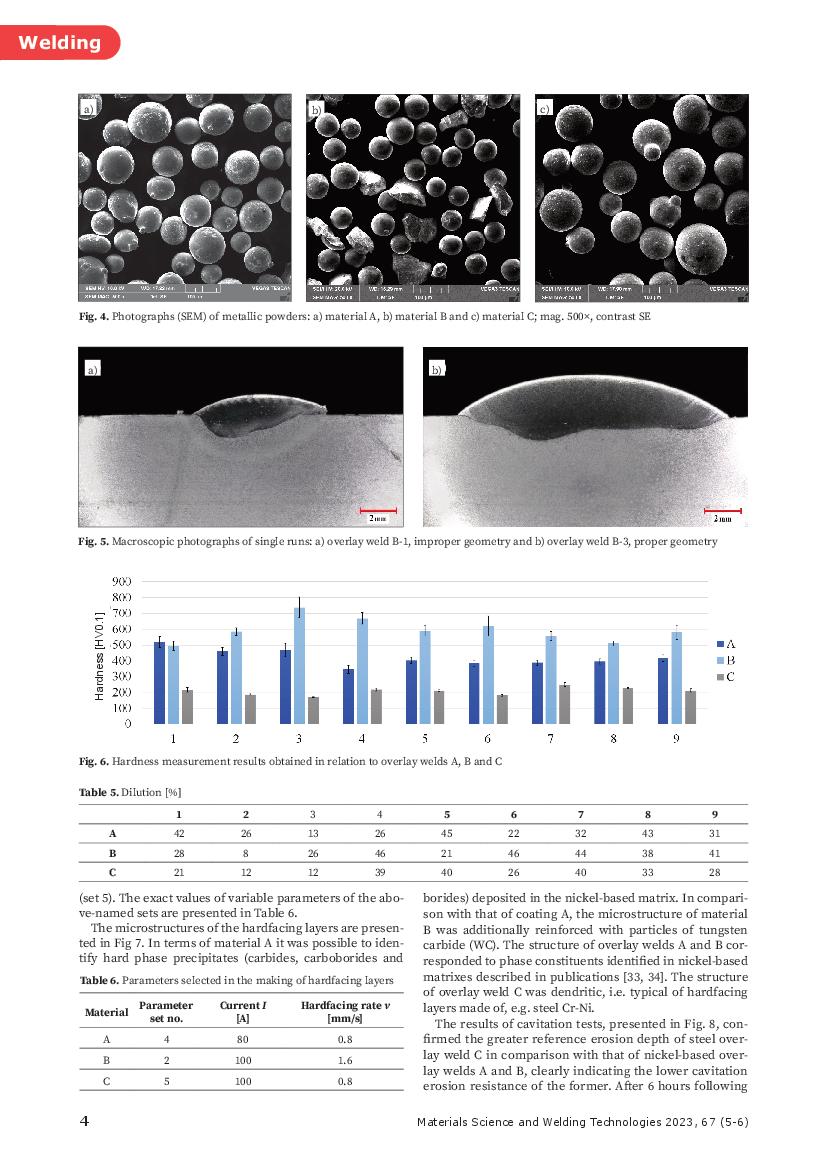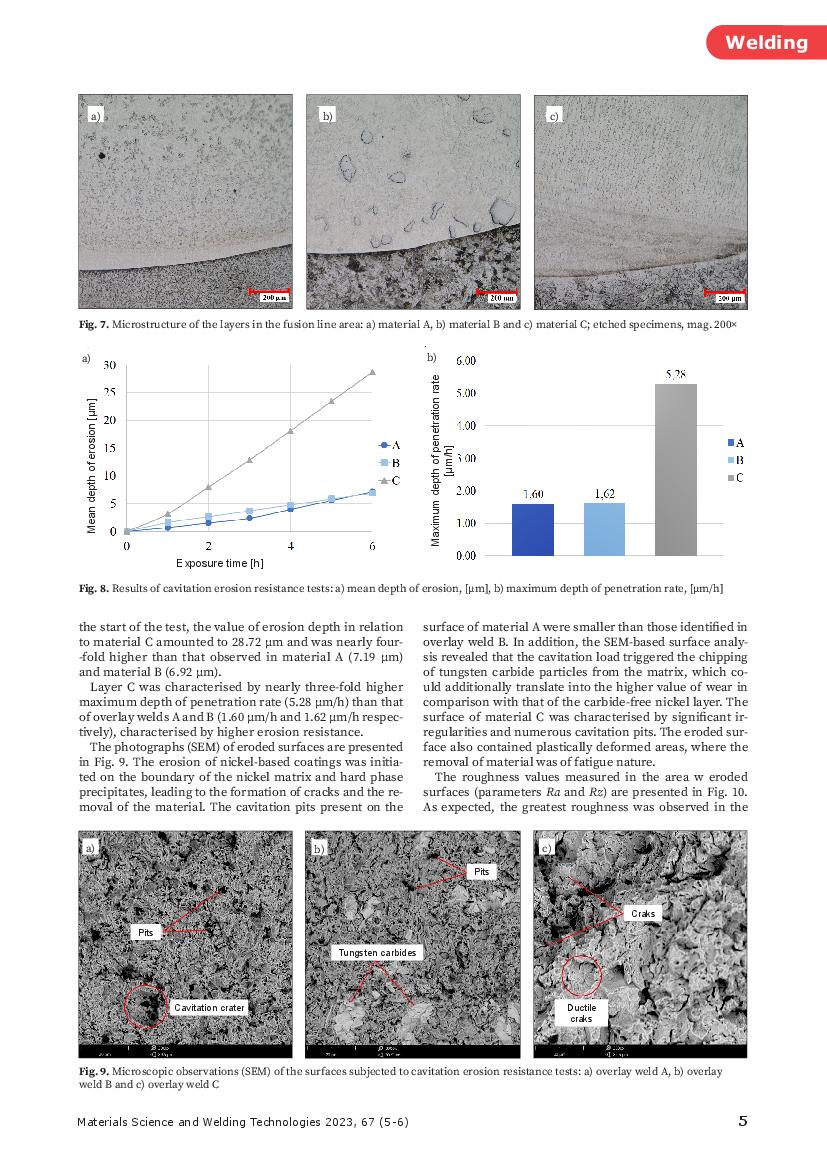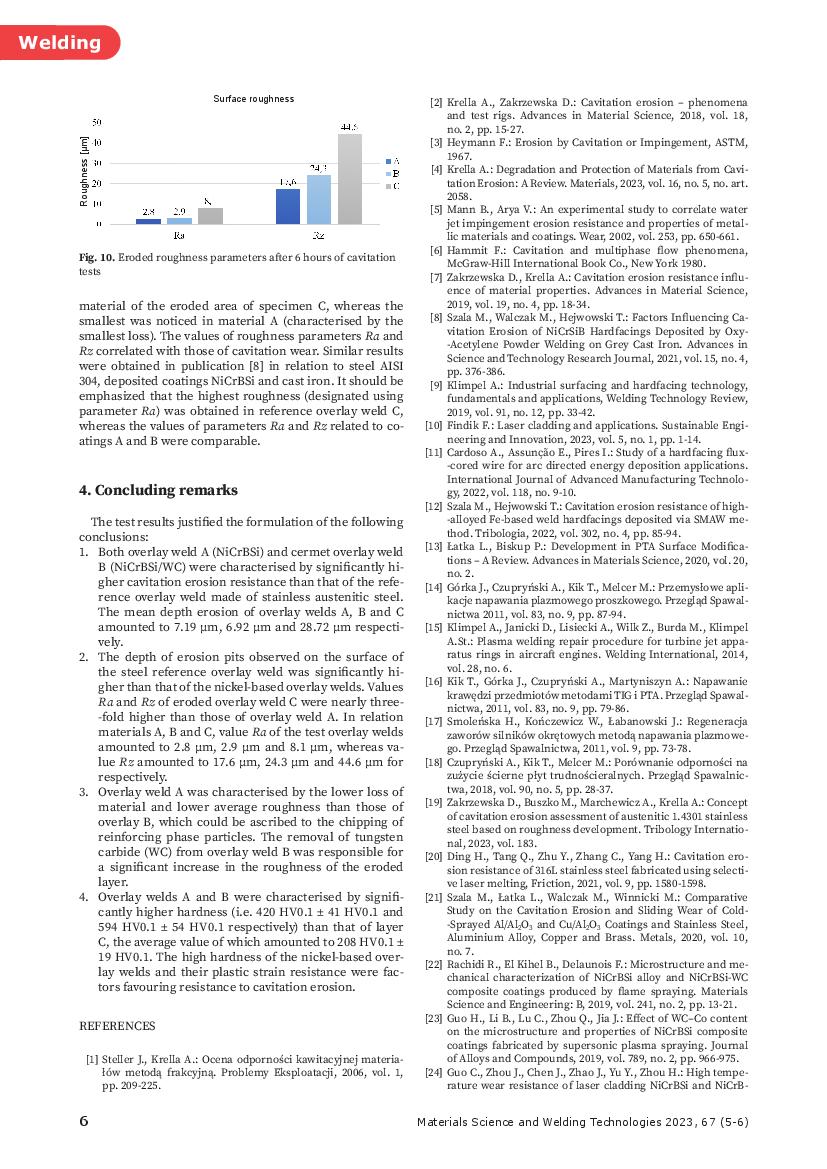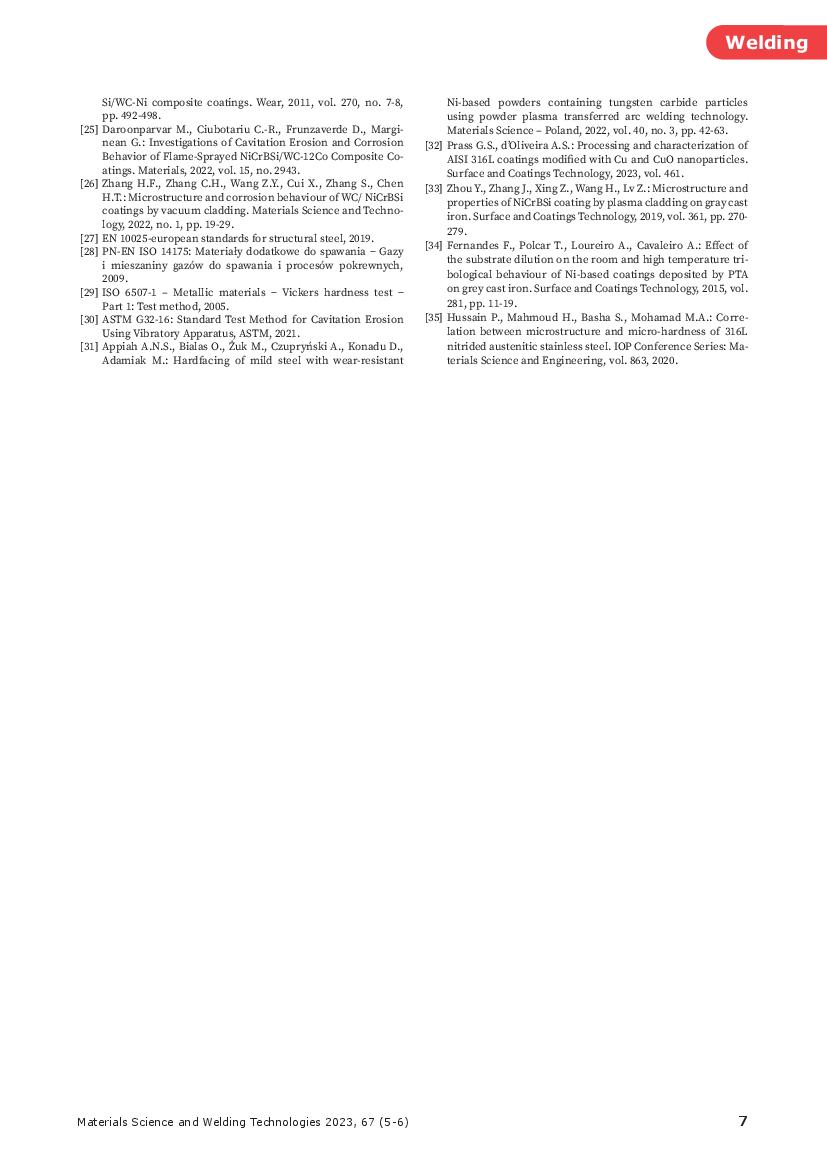The Comparison of Cavitation Resistance of Laser Metal Deposited Layers
Cavitation erosion is a specific case of wear, primarily affecting elements exposed to a watery environment, e.g. elements of pumps, valves and compression-ignition engines. Nickel-based alloys are regarded as materials of potentially high cavitation erosion resistance. The study discussed in the article involved the examination of cavitation erosion resistance of hardfacing layers made of NiCrBSi and NiCrBSi + 35 % wt. WC, deposited using the PPTAW method. Resistance to cavitation erosion was tested in accordance with the ASTM G-32 standard. The test results were subsequently compared with those obtained in relation to layers made of powders, the composition of which corresponded to stainless steel X5CrNiMo17-12-2 (used as a reference material). The results revealed that both nickel-based materials were characterised by significantly higher erosion resistance than that of the reference steel. The mean depth of the reference erosion of overlay welds made using X5CrNiMo17-12-2 amounted to 28.72 μm, whereas the depth of erosion in the hardfacing layers made of NiCrBSi and NiCrBSi + 35 % wt. WC amounted to 7.19 μm and 6.92 μm respectively. The above-presented differences resulted from the significantly higher hardness and plastic strain resistance of the nickel-based overlay welds than those of the steel overlay weld. It was also observed that, in spite of their higher hardness, the layers made of NiCrBSi + 35 % wt. WC were characterised by lower cavitation erosion resistance than the layers made of NiCrBSi (which could be ascribed to the chipping of the hardening phase).
 1 / 7
1 / 7
 2 & 3 / 7
2 & 3 / 7
 4 & 5 / 7
4 & 5 / 7
 6 & 7 / 7
6 & 7 / 7
